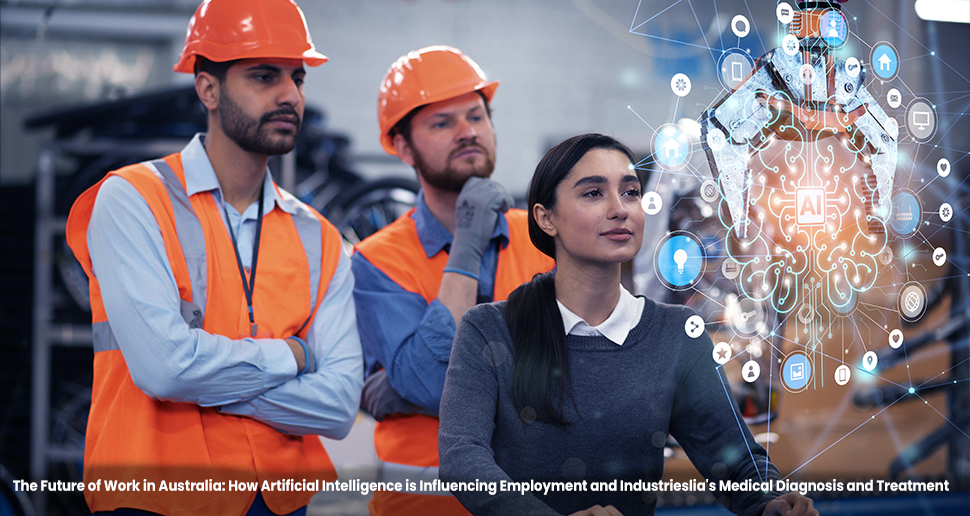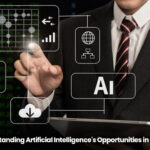The Future of Work in Australia: How AI influences Employment and Industries
Generative AI in Australia
The generative Artificial Intelligence technology has revolutionized and improved the automation opportunities in various professions in Australia. These technologies improve the productivity of Australia and the life-quality of its people. By 2019, the Australian economy was at the tail-end of a three-decade boom and losing momentum fast, as per McKinsey Global Institute, which examined the possible impact of automation on the future of work in Australia. At Seaford, we focus on the potential applications of AI technology and how it impacts the work culture in Australia. The automation wave through AI in Australia brings in the possibility to include economic growth with productivity uplift. In 2019, Australia needed to embrace the rapid automation adoption to facilitate social inclusion while using AI.
In 2023, generative AI emerged as a strong-force that reshaped the future of work in Australia. AI has some possibilities that include advanced natural language capabilities with which knowledge gets embedded into the tools of workers, employers, and professionals. By 2030, generative AI could impact through a more comprehensive set of work activities that transform skills demand in Australia. Through Generative AI, education, professional, and financial services will record increases in automation capabilities and opportunities in Australia by 2030.
A new landscape of human work emerges through technology-driven shifts that intersect with other macro factors like increased infrastructure funding and a net-zero transition. By 2030, around 9 to 10% of the Australian workforce needs to transition out of their current roles into new occupations as generative AI makes the professional sectors smarter. Three distinct operational groups among these potential occupational transitions include resilient and growing occupations, stalled but rising occupations, and disrupted and declining occupations.
Resilient and growing professions include healthcare, science and technology jobs, and professional services, while stalled but rising occupations involve construction, designing, and building and mechanical installations. The third job category includes those that showed a downward trend through low growth and decline from 2019 to 2022, as these are likely to keep shrinking. They include office support, food services, production work, and customer services.
Skills for Future Workforce
With the automation of jobs and professions through Generative AI, skill-building becomes the crucial tool to navigate the changing jobs landscape. At Seaford, we understand that to stay with the pace of AI technology, all workers, employers, and professionals should build new skills continuously.
A greater demand for job opportunities will occur in several occupations that require social, emotional, and technological skills. The occupations that require only basic cognitive skills will decline and diminish by 2030. For instance, social and emotional skills like empathy in healthcare will keep having high demand in the industry. Here, an increased use of digital systems in the healthcare sector results in the overall digitization of jobs and industries. Hence, healthcare workers may need to upgrade their skill sets to keep pace with AI.
In the Australian job market, demand is anticipated to shrink for those professions that require basic cognitive skills. The recurring jobs with routine tasks get done by AI and software. Employers can spend more time on high-value work like delivering superior customer service. Hence, higher education remains essential with an increase in demand across sectors like STEM, health, business, and legal professions. The demand for professional courses with skill-building capacities and skill-upgrading abilities will considerably increase by 2030. The continued and increasing demand for certain skill sets results in up-skilling by workers, employees, and professionals for enabling transitions to better-paid positions. It rebalances the Australian economy towards higher-wage jobs. Thus, many more Australians could secure high-paying jobs through proper education and skills training.
The current landscape of Artificial Intelligence (AI) in Australian Industries
The current landscape of AI within Australian industries is huge with a lot of sectors utilizing the power of Artificial Intelligence technology. The leading industries that get serviced by AI businesses in Australia since 2021 include a long list of sectors that dictate the Australian economy. For instance, from customer service chatbots to medical diagnosis systems and drones, Artificial Intelligence is playing an ever-growing role in our lives. We at Seaford research and compile this information for your benefit and to understand AI more closely.
Here, the long list of industries and sectors in which Australia engages and employs AI technology forms the current landscape of AI in Australia. These industries include aerospace, defence, and security, mining, energy and resources, healthcare, agriculture, transport, IT services like data science, financial services, logistics, retail, construction, education, automotive, customer services, real estate, media, and entertainment.
Digital technologies with AI are worth around 310 to 315 billion AUD to the Australian economy by 2028. This stat is according to the Commonwealth Scientific and Industrial Research Organization (CSIRO). The integration of automation technologies through AI adds an additional 170 to 600 billion AUD a year to the GDP of Australia as estimated by McKinsey.
AI is used in the maintenance of Sydney Harbor Bridge with around 2300 to 2400 AI sensors on the bridge. The data generated gets analyzed through Machine Learning and Predictive Analysis to identify priority locations for bridge-maintenance of concrete supports. AI helps minimize maintenance costs while avoiding traffic disruptions. Drones are used in rescue operations for those stranded in the sea through surfing or otherwise. Agbot II, the AI robot developed at Queensland University can improve the revenue of agriculture in Australia. With all these applications along with many others, the future of work in Australia will be highly impacted by AI, which will influence employment and industries.
Conclusion
Visit www.seaford.au to understand more about AI and how it impacts your profession, sector, and workplace. Identify the skills you need to work with AI in the coming years through us at Seaford.




